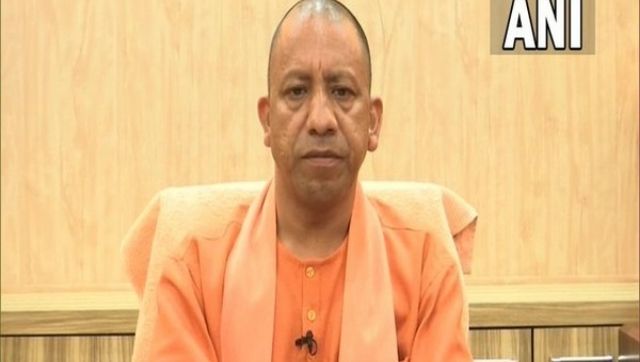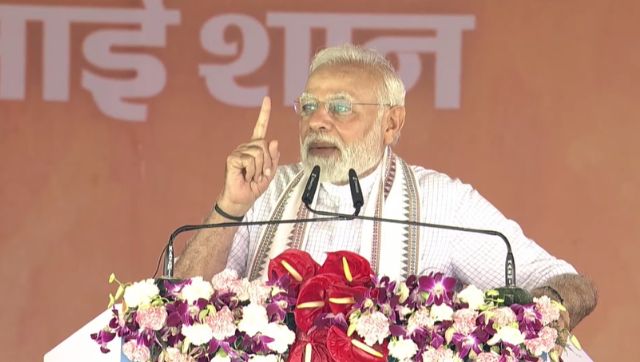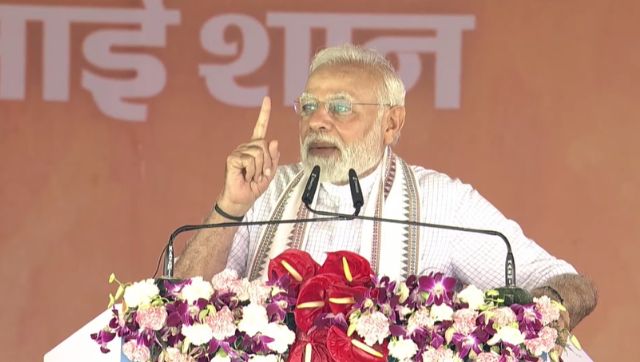A few hours before dawn broke on Bundelkhand’s horizon on 20 November, a truck filled with sand was speeding down the highway when it hit, and consequently killed, a labourer in Banda, a Bundelkhand district in Uttar Pradesh. “He was standing there urinating when the truck reversed at high speed, and crushed him,” said Pyare Lal, the victim’s brother, and also an eye witness of the brutal episode. He added, in the manner of survivors, “It was just luck that I was not in the truck’s path. I had been standing right there a few moments ago.”
There have been similar accidents all over Uttar Pradesh in the last few years: A woman was run over by a tractor for carrying bags of sand home; a BJP worker was abducted and then run over by a tractor for complaining about illegal mining in Sitapur; a young cyclist was run over by speeding trucks transporting sand in Banda. While some of these accidents have been gravely injurious, others have been downright fatal. In Bundelkhand, these cases have often been tied up with the hugely active sand trade, and hence mafia – “paise waalon ki balu mafia”, in local parlance.
Banda is particularly rich in sand because of the rivers Ken, Bagen and Yamuna that flow through it. The 2017 district survey report of minor mineral excavation recognised 7688 hectares of land as potential sand mines. The report stated that only 1408.13 hectares land was being used as mines or had already been proposed for mines, 4653.35 hectares land was left to be capitalised on.
Although the National Green Tribunal has prohibited sand mining without the required clearings from the State Environment Impact Assessment Society (SEIAA) in Uttar Pradesh, a thriving underground economy of illegal sand mining is a flourishing business, meeting the ever-rising demands of the construction industry to which sand is vital.
According to the same report produced in conjunction with the UP Environmental Impact Assessment Authority and Department of Geology & Mining, although sand production has seen a decline from 11,36,260 cubic metres in 2014-15 to 61,250 cubic metres in 2016-17, the last year raked in Rs 62 lakh in revenue just from the district of Banda. Sand mining, as even high school children in Bundelkhand can tell us, is an incredibly lucrative line of business.
Although official records state that sand production has actually fallen, this data actually belies the facts. While there is no official data on illegal mines, obviously, former Minister of Mines Piyush Goyal had said in a Lok Sabha session that the number of illegal mines have increased from 6,777 in 2014 to 11,350 in 2016. When the BJP came to power in 2017, it passed the much-feted UPCOCA (Uttar Pradesh Control of Organised Crime Act), with the specific aim of cracking down on organised crime, such as land grabbing and illegal mining. On-ground gossip around the UPCOCA was that this was just the ruling party’s attempt to run dry the khazana of Samajwadi Party, which has always been understood to have alleged links with the sand mafia.
Though our investigations over the years have consistently highlighted how crackdowns only seem to run dry the poor man’s pockets. On the one hand, there is the police going around randomly seizing bullock carts and cycles that are used to carry sand needed to build toilets — PM Modi’s personally championed cause — on the other, there are these deaths. Whether the larger nexus of the sand mafia has suffered any blows is unclear; but the continuous movement of trucks overladen with sand throughout the night in Bundelkhand definitely otherwise.
In the 20 November case, the driver was not given the chance to execute a hit-and-run. “When I saw that the driver was fumbling around in the cabin of the lorry, I realised he had dropped the keys. I climbed into the truck and took the keys away,” said Pyare Lal, eyeing the truck that was still parked nearby when we reached the crime scene. With ‘Pukaro’ written in brightly coloured letters at the back, the truck sported a dent on the rear bumper, where it had hit Lal’s brother. Pyare Lal had shown presence of mind right after the accident, he managed to get together a crowd that included the victim’s family, neighbours and villagers, who all gathered at the site of the accident. Some blocked lorry’s path ahead, and some sat by the victim’s body, which had been respectfully covered with a blanket.
“I informed the police,” said Pyare Lal, “and all they said was to file an FIR.” The police also left the scene soon after, informing the family that they would be expected at the local police station. “What investigation will happen? Whatever protocol we usually follow, that’s what we’ll do,” said Soopa Police Station in-charge Rajendra Rathore nonchalantly.
Given how illegal sand mining is an open secret in these parts of the town, this fact did not come as a surprise to Shiv Devi, the local Banda reporter. Operating heavy machinery on government land or spiriting away hundreds of trucks can never be a discreet operation after all, and the sand mafia’s nexus is a well-known one.
The victim’s body, in the Banda case, was allowed to be sent for a postmortem when the truck driver, who had been flustered for hours for “only doing his job”, finally called the contractor to the scene. The thekedaar, perhaps noticing the swarming crowds, almost immediately offered to pay the victim’s family Rs 10 lakh as compensation money. This too, we know, is Standard Operating Procedure. A few deaths are acceptable collateral damage to a thriving sand mafia, and contingency plans to deal with the fallout are already in place.
As for an everyman in these districts, negotiating with the sand mafia — even about dead bodies — seems to be normalised. Nobody present at the scene — not even his brother Pyare Lal — had any comments about the payout.
Khabar Lahariya is a women-only network of rural reporters from Bundelkhand.


)




)
)
)
)
)
)
)
)